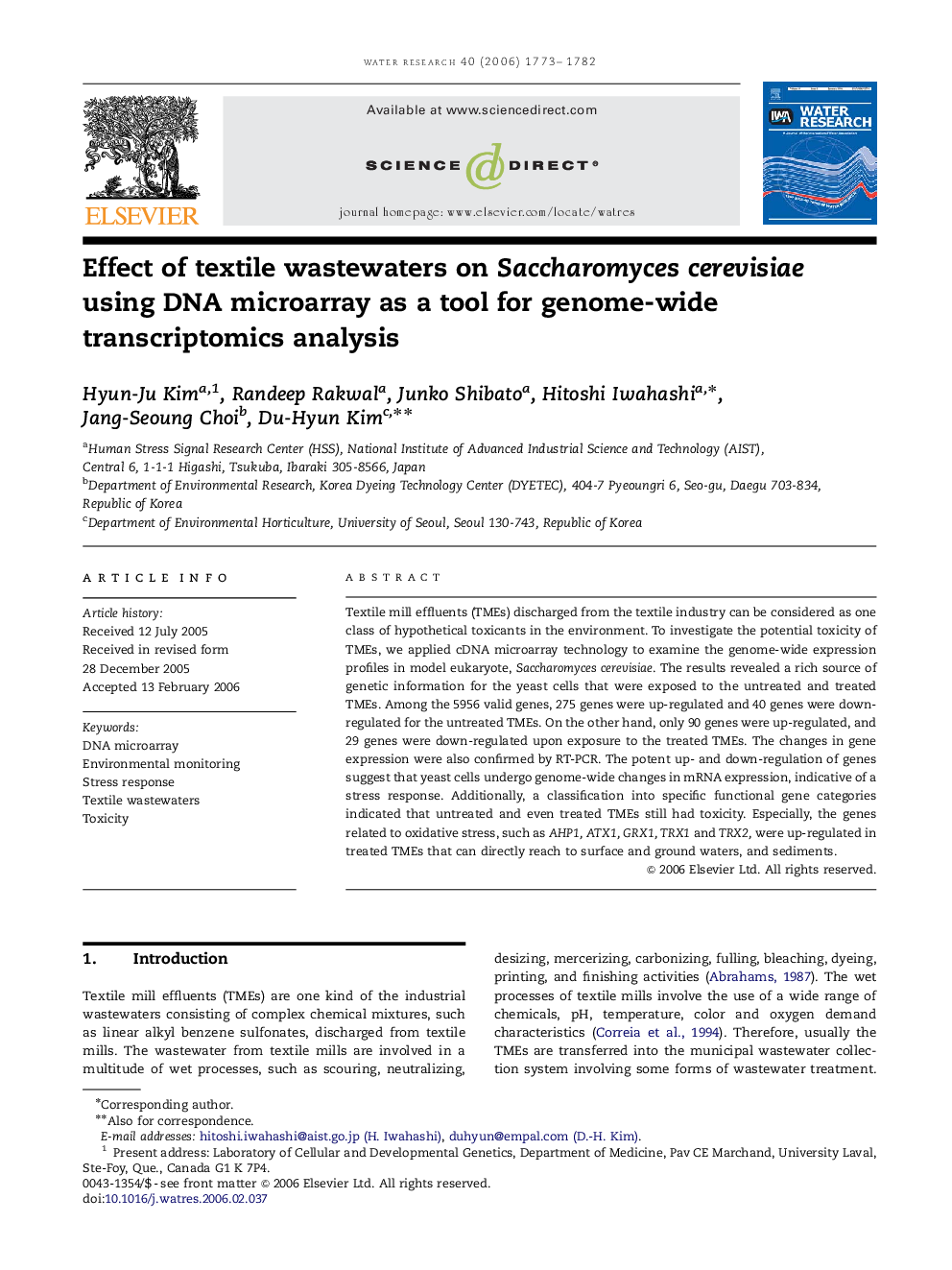| Article ID | Journal | Published Year | Pages | File Type |
|---|---|---|---|---|
| 4486312 | Water Research | 2006 | 10 Pages |
Textile mill effluents (TMEs) discharged from the textile industry can be considered as one class of hypothetical toxicants in the environment. To investigate the potential toxicity of TMEs, we applied cDNA microarray technology to examine the genome-wide expression profiles in model eukaryote, Saccharomyces cerevisiae. The results revealed a rich source of genetic information for the yeast cells that were exposed to the untreated and treated TMEs. Among the 5956 valid genes, 275 genes were up-regulated and 40 genes were down-regulated for the untreated TMEs. On the other hand, only 90 genes were up-regulated, and 29 genes were down-regulated upon exposure to the treated TMEs. The changes in gene expression were also confirmed by RT-PCR. The potent up- and down-regulation of genes suggest that yeast cells undergo genome-wide changes in mRNA expression, indicative of a stress response. Additionally, a classification into specific functional gene categories indicated that untreated and even treated TMEs still had toxicity. Especially, the genes related to oxidative stress, such as AHP1, ATX1, GRX1, TRX1 and TRX2, were up-regulated in treated TMEs that can directly reach to surface and ground waters, and sediments.
